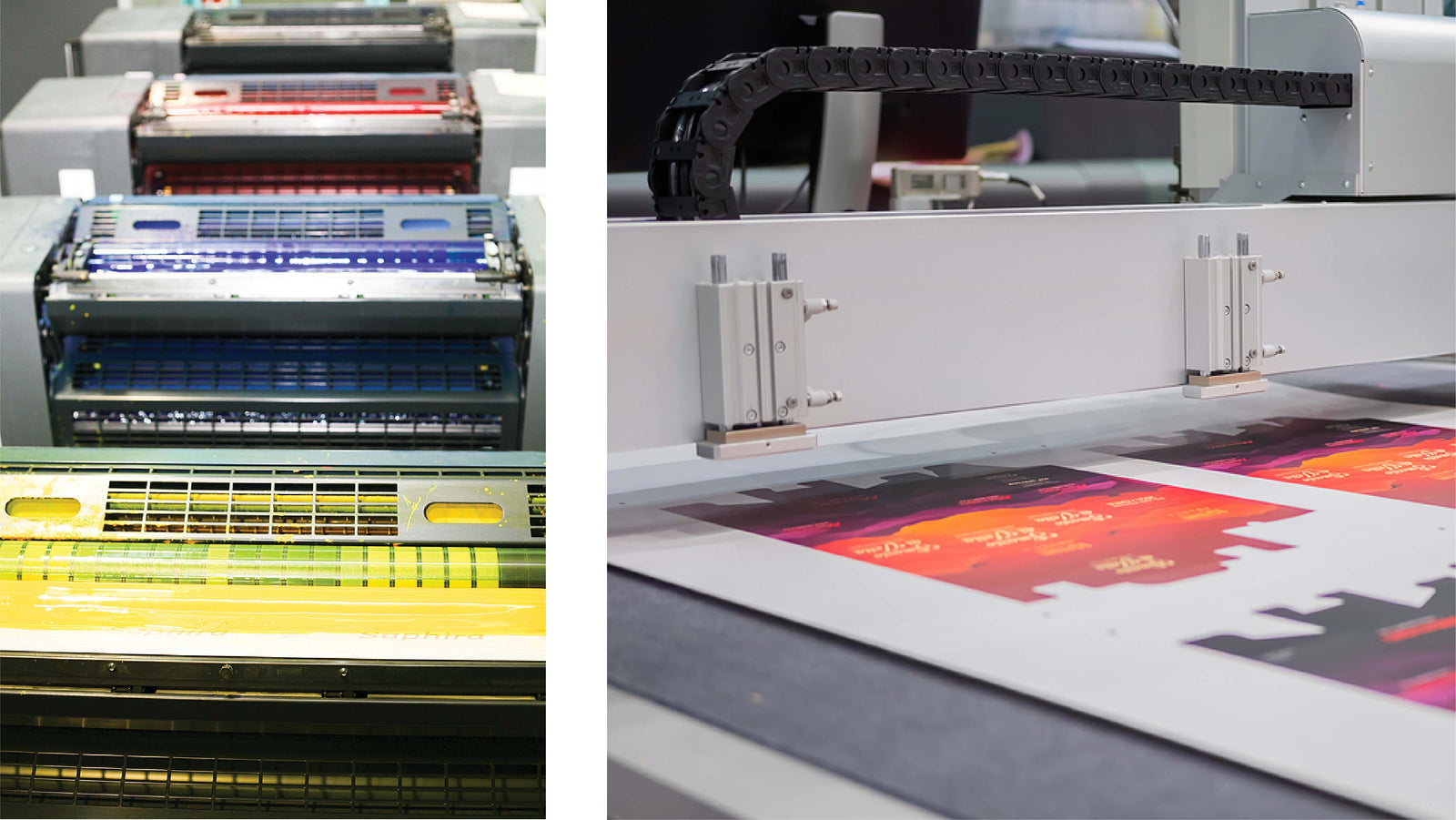Your Cart is Empty

May 10, 2023 2 min read
Printing is an essential part of any business that requires documents, flyers, marketing, and more. But with so many printing options available in 2023, it can be challenging to decide which one to choose (at TM Impressions, we will choose the best option for your project so you don't have to worry). Two of the most popular printing methods are offset printing and digital printing. In this post, we'll explain the difference between these two printing processes and provide examples of each.
Offset Printing
Offset printing is a more traditional printing method that has been around for over a century. It is a commercial printing method that involves transferring individual ink colors from a plate to a rubber blanket and then to the printing surface. The printing plates are created using a photographic process, and the ink is applied in a specific order to create the desired image. CMYK references cyan, magenta, yellow, and black which can be combined to create any color including full color images. On limited color projects, we can print using select spot or Pantone colors (Pantone C/coated or Pantone U/uncoated depending on the substrate being printed on). Vector files must be used for this printing style (click here to see our guide on vector art files).
Offset printing is best suited for large print runs. It is also ideal for projects that require exact color reproduction. Offset printing provides a consistent and reliable output, and the colors are vibrant and long-lasting. The high-quality results of offset printing come at a higher cost (especially in setup/labor) than digital printing, but the cost per unit decreases as the print run increases.
Examples of Offset Printing:
- A print run of 10,000 copies of a magazine
- Printed masking tape
- Waxed Paper
Digital Printing
Digital printing is a more modern printing method that is able to print from many file types to print directly onto a variety of media. It is a cost-effective and fast printing method that is easier to setup and ideal for smaller print runs. Digital printing is a popular choice for printing small batches of flyers, business cards, and other marketing material.
Digital printing is a more flexible printing method than offset printing because it doesn't require printing plates. It also allows for customization mid-run. Digital printing is also suitable for printing variable data, such as different addresses on each envelope or postcards direct mail projects.
Examples of Digital Printing:
- Roll labels
- Business cards
- Small run of postcards
Conclusion
Both offset printing and digital printing have their advantages and disadvantages. Offset printing is ideal for large print runs and specific color reproduction, while digital printing is cost-effective and suitable for small print runs and variable data projects. When you order from TM Impressions, our experts will have already figured out which method is best suited for your project!
Sign up to get the latest on sales, new releases and more …